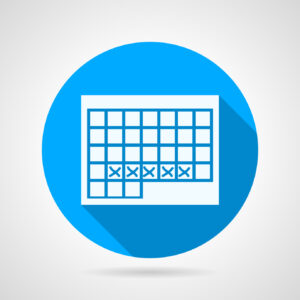When it comes to kits, apps and the like to detect ovulation to help women get pregnant, it helps to get the facts straight
 Recent years have seen a proliferation of apps, devices and test kits that promise to tell women when they are fertile and to help them conceive. Do these devices live up to their promise? Many of my patients will spend a lot of time and money on self-help items like ovulation kits to either facilitate treatment or to avoid having to see a specialist like me in the first place!
Recent years have seen a proliferation of apps, devices and test kits that promise to tell women when they are fertile and to help them conceive. Do these devices live up to their promise? Many of my patients will spend a lot of time and money on self-help items like ovulation kits to either facilitate treatment or to avoid having to see a specialist like me in the first place!
Here are a few tips to consider when you are thinking of buying a fertility-monitoring product of any type.
1. Keep it simple when possible
Women who have regular menstrual cycles with an interval of between 25-35 days are 95 percent likely to be ovulatory. In other words, if you are getting your menstrual period every month, at around the same day of the month – give or take a few days – congratulations, you are stone normal! Confirming the day on which you ovulate using a urine test kit is all that you really need to help conceive.
There are many ovulation kits out there, and for the most part, the least expensive kit is the best one. Some women will note a poor or equivocal signal from the ovulation kit. If this happens, switch to another one and see if there is still a problem. Each kit is a bit different, but most have what is called a ‘surge guide.’
This tells you, based on the darkness of the color signal, whether you have started your LH (leuteinizing hormone) surge. The LH surge is responsible for causing ovulation to occur. Once the surge begins, ovulation will occur within about 36 hours. The surge of LH in the bloodstream is about six or more hours earlier than the surge in the urine. Therefore, depending upon what time of day you check your urine, you should expect to ovulate 24-36 hours after you see the LH surge.
Because the LH surge lasts for a day or two, repeatedly testing your urine to see if it gets ‘darker’ or ‘better’ is not helpful. Once you have reached the threshold consistent with ovulation, save your test strips, stop testing and start timing. There is very limited added value to the expensive variations of this simple test.
Once a woman can project when she will ovulate, she can time intercourse to optimize the chances of getting pregnant. If you do the test in the a.m. and it is positive, try to have intercourse that evening and the next. If you do the test in the p.m., time intercourse to the next morning and the morning after.
2. It’s harder if you’re not ‘regular’
Women who have irregular menstrual cycles (variation of their cycle length of seven days or more) or have menstrual periods that are more frequent than every 25 days or longer than 35 days may have ovulatory dysfunction. However, some women with cycles in this window have no problems conceiving on their own.
If you want to check when you are likely to be ovulating, you should count 15-16 days backwards from your shortest cycles and test for LH beginning on that day. For example, if your cycle is typically 24 days long, start testing on Day 8 after the onset of your menstrual period. If your cycle is typically 34-38 days long, start testing on cycle day 28.
If your cycles are fairly irregular, this method can become frustrating and consumptive of LH test kits. It’s helpful to remember that, for most healthy couples, having intercourse at least twice a week is adequate for optimal fertility.
3. Fancier is not better
A recent article in the journal Obstetrics and Gynecology tested a number of over-the-counter apps and websites that are available for a fee. These methods claim to allow a woman to identify her ‘fertile window’ with greater accuracy than a simple LH test. They are not regulated by the Food and Drug Administration and there is no need for proof of claim.
As I’ve said before in my blogs, this is usually a sign for the buyer to beware. Most of these apps were created without input from medical personnel and they were found to be inaccurate about 75 percent of the time!1 The most inaccurate results were seen for women whose menstrual cycle lengths fell out of the normal interval of 25-35 days.
It is possible to get misinformation from these self monitoring ovulation kits, and therefore I do not recommend them. If you feel that an app can give you a better sense of control over the stressful process of trying to conceive, I strongly recommend that you use one that has been backed up by medical science.
Look for a sponsoring physician or nurse, preferably a physician who is a board-certified reproductive endocrinologist. There are also complex kits that claim to be able to predict the fertile window better than an LH test. Again, these are unregulated and can be very expensive (costing into the hundreds of dollars).
Your money is best spent elsewhere.
1. Setton R, Tierney C, Tsai T. The accuracy of web sites and cellular phone application in predicting the fertile window. Obstetrics and Gynecology 2016; 128:58-63
